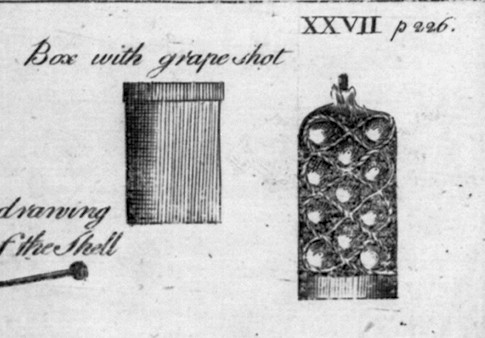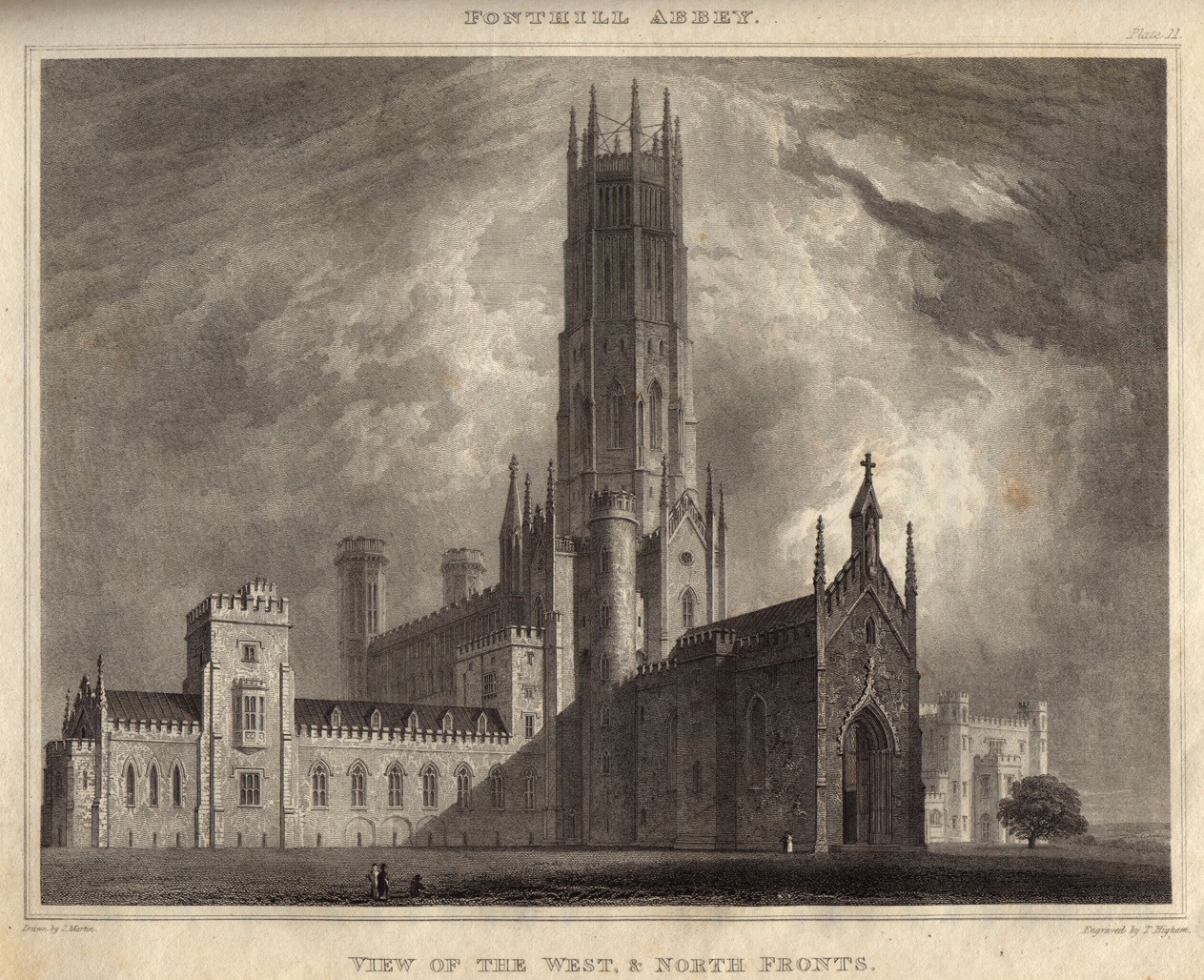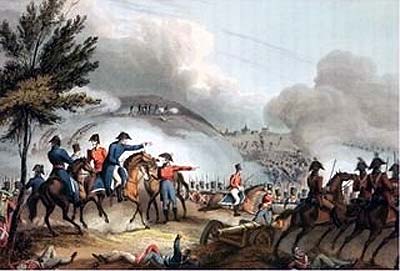|
Thomas Wildman
Colonel Thomas Wildman (1787 – 1859) was a British Army officer during the Napoleonic Wars, a draftsman, and landowner. Life He was the eldest son of Thomas Wildman of Bacton Hall, Suffolk, by Sarah, daughter of Henry Hardinge, of Durham. A nephew of the political reformer John Horne Tooke and friend of Lord Byron at Harrow, Wildman purchased a cornetcy in the 7th Light Dragoons in 1808 and later the same year he was promoted lieutenant without purchase. At the Battle of Waterloo, he was an extra aide-de-camp to Lord Uxbridge. His letter after the battle described Uxbridge's wounding at the end of the battle (grapeshot to the knee) and the subsequent amputation. Wildman himself was slightly wounded in the battle. In 1816, he purchased a majority in the 2nd West India Regiment, and later transferred to the 9th Light Dragoons. In 1828, he became captain of the Mansfield Troop of the Nottinghamshire Yeomanry and a few months later became major-commandant of the Sherw ... [...More Info...] [...Related Items...] OR: [Wikipedia] [Google] [Baidu] |
Colonel Thomas Wildman (1787-1859) By Thomas Lawrence
Colonel (abbreviated as Col., Col or COL) is a senior military officer rank used in many countries. It is also used in some police forces and paramilitary organizations. In the 17th, 18th and 19th centuries, a colonel was typically in charge of a regiment in an army. Modern usage varies greatly, and in some cases, the term is used as an honorific title that may have no direct relationship to military service. The rank of colonel is typically above the rank of lieutenant colonel. The rank above colonel is typically called brigadier, brigade general or brigadier general. In some smaller military forces, such as those of Monaco or the Vatican, colonel is the highest rank. Equivalent naval ranks may be called captain or ship-of-the-line captain. In the Commonwealth's air force ranking system, the equivalent rank is group captain. History and origins By the end of the late medieval period, a group of "companies" was referred to as a "column" of an army. According to Raymond O ... [...More Info...] [...Related Items...] OR: [Wikipedia] [Google] [Baidu] |
Grapeshot
Grapeshot is a type of artillery round invented by a British Officer during the Napoleonic Wars. It was used mainly as an anti infantry round, but had other uses in naval combat. In artillery, a grapeshot is a type of ammunition that consists of a collection of smaller-caliber round shots, which in most cases are about the size of a golf ball, packed tightly in a canvas bag and separated from the gunpowder charge by a metal wadding, rather than being a single solid projectile. Grapeshot also comes packaged in clusters of three by iron rings, and in three tiers, with the shot being held in by cast iron rings. When assembled, the shot resembled a cluster of grapes, hence the name. Grapeshot was used both on land and at sea. On firing, the canvas wrapping disintegrates and the contained balls scatter out from the muzzle, giving a ballistic effect similar to a giant shotgun. Grapeshot was devastatingly effective against massed infantry at short range and was also used at medium rang ... [...More Info...] [...Related Items...] OR: [Wikipedia] [Google] [Baidu] |
John Shaw Sr
John is a common English name and surname: * John (given name) * John (surname) John may also refer to: New Testament Works * Gospel of John, a title often shortened to John * First Epistle of John, often shortened to 1 John * Second Epistle of John, often shortened to 2 John * Third Epistle of John, often shortened to 3 John People * John the Baptist (died c. AD 30), regarded as a prophet and the forerunner of Jesus Christ * John the Apostle (lived c. AD 30), one of the twelve apostles of Jesus * John the Evangelist, assigned author of the Fourth Gospel, once identified with the Apostle * John of Patmos, also known as John the Divine or John the Revelator, the author of the Book of Revelation, once identified with the Apostle * John the Presbyter, a figure either identified with or distinguished from the Apostle, the Evangelist and John of Patmos Other people with the given name Religious figures * John, father of Andrew the Apostle and Saint Peter * Pope Joh ... [...More Info...] [...Related Items...] OR: [Wikipedia] [Google] [Baidu] |
Augusta Leigh
Augusta Maria Leigh (''née'' Byron; 26 January 1783 – 12 October 1851) was the only daughter of John "Mad Jack" Byron, the poet Lord Byron's father, by his first wife, Amelia, née Darcy (Lady Conyers in her own right and the divorced wife of Francis, Marquis of Carmarthen). Early life Augusta's mother died soon after her birth. Her grandmother, Lady Holderness, raised Augusta for a few years, but died when Augusta was still a young girl, and the child divided her time among relatives and friends. Marriage Augusta later married her cousin, Lt. Colonel George Leigh (1771–1850), son of General Charles Leigh (1748–1815) and his wife, Frances Byron, her paternal aunt. The couple had seven children: Georgiana Augusta, Augusta Charlotte, George Henry, Elizabeth Medora, Frederick George, Amelia Marianne, and Henry Francis. Richard Temple-Nugent-Brydges-Chandos-Grenville, 1st Duke of Buckingham and Chandos, noted the wedding with disdain in his diary: "Poor Augusta Le ... [...More Info...] [...Related Items...] OR: [Wikipedia] [Google] [Baidu] |
Newstead Abbey
Newstead Abbey, in Nottinghamshire, England, was formerly an Augustinian priory. Converted to a domestic home following the Dissolution of the Monasteries, it is now best known as the ancestral home of Lord Byron. Monastic foundation The priory of St. Mary of Newstead, a house of Augustinian Canons, was founded by King Henry II of England about the year 1170,NEWSTEAD ABBEY '': PastScape'' as one of many penances he paid following the murder of . Contrary to its current name, Newstead was never an abbey: it was a priory. In the ... [...More Info...] [...Related Items...] OR: [Wikipedia] [Google] [Baidu] |
Fonthill Abbey
Fonthill Abbey—also known as Beckford's Folly—was a large Gothic Revival country house built between 1796 and 1813 at Fonthill Gifford in Wiltshire, England, at the direction of William Thomas Beckford and architect James Wyatt. It was built near the site of the Palladian house, later known as Fonthill Splendens, which had been constructed by 1770 by his father William Beckford. This, in turn, had replaced the Elizabethan house that Beckford The Elder had purchased in 1744 and which had been destroyed by fire in 1755. The abbey's main tower collapsed several times, lastly in 1825 damaging the western wing. The entire abbey was later almost completely demolished. History Fonthill Abbey was the brainchild of William Thomas Beckford, son of wealthy English plantation owner William Beckford and a student of architect Sir William Chambers, as well as of James Wyatt, architect of the project. In 1771, when Beckford was ten years old, he inherited £1 million () and an incom ... [...More Info...] [...Related Items...] OR: [Wikipedia] [Google] [Baidu] |
William Thomas Beckford
William Thomas Beckford (29 September 1760 – 2 May 1844) was an English novelist, art collector, patron of decorative art, critic, travel writer, plantation owner and for some time politician. He was reputed at one stage to be England's richest commoner. The son of William Beckford (politician), William Beckford and Maria Hamilton, daughter of the Hon. George Hamilton (died 1775), George Hamilton, he served as a Member of Parliament for Wells (UK Parliament constituency), Wells in 1784–1790 and Hindon (UK Parliament constituency), Hindon in 1790–1795 and 1806–1820. Beckford is remembered for a Gothic novel ''Vathek'' (1786), for building the lost Fonthill Abbey in Wiltshire and Lansdown Tower ("Beckford's Tower") in Bath, and for his art collection. Biography Beckford was born in the family's London home at 22 Soho Square on 29 September 1760. At the age of ten, he inherited a fortune from his father William Beckford (politician), William Beckford, who had been twice a ... [...More Info...] [...Related Items...] OR: [Wikipedia] [Google] [Baidu] |
Peninsular War
The Peninsular War (1807–1814) was the military conflict fought in the Iberian Peninsula by Spain, Portugal, and the United Kingdom against the invading and occupying forces of the First French Empire during the Napoleonic Wars. In Spain, it is considered to overlap with the Spanish War of Independence. The war started when the French and Spanish armies invaded and occupied Portugal in 1807 by transiting through Spain, and it escalated in 1808 after Napoleonic France occupied Spain, which had been its ally. Napoleon Bonaparte forced the abdications of Ferdinand VII and his father Charles IV and then installed his brother Joseph Bonaparte on the Spanish throne and promulgated the Bayonne Constitution. Most Spaniards rejected French rule and fought a bloody war to oust them. The war on the peninsula lasted until the Sixth Coalition defeated Napoleon in 1814, and is regarded as one of the first wars of national liberation. It is also significant for the emergence of larg ... [...More Info...] [...Related Items...] OR: [Wikipedia] [Google] [Baidu] |
5th Dragoon Guards
The 5th (Princess Charlotte of Wales's) Dragoon Guards was a British army cavalry regiment, officially formed in January 1686 as Shrewsbury's Regiment of Horse. Following a number of name changes, it became the 5th (Princess Charlotte of Wales's) Regiment of Dragoon Guards in 1804. In 1922, it was amalgamated with The Inniskillings (6th Dragoons) to form the 5th/6th Dragoons. Its history and traditions continue today in the Royal Dragoon Guards, an armoured cavalry unit of the British Army. History On 1 January 1686, several independent troops of horse raised in response to the 1685 Monmouth Rebellion were formed into the Earl of Shrewsbury's Regiment of Horse. After the 1688 Glorious Revolution, it served in the Williamite War in Ireland, including the Battle of the Boyne and the First Siege of Limerick. When the Nine Years' War ended in 1697, the regiment escaped disbandment by being made part of the Irish military establishment, where it remained until the creation of th ... [...More Info...] [...Related Items...] OR: [Wikipedia] [Google] [Baidu] |
Colonel
Colonel (abbreviated as Col., Col or COL) is a senior military officer rank used in many countries. It is also used in some police forces and paramilitary organizations. In the 17th, 18th and 19th centuries, a colonel was typically in charge of a regiment in an army. Modern usage varies greatly, and in some cases, the term is used as an honorific title that may have no direct relationship to military service. The rank of colonel is typically above the rank of lieutenant colonel. The rank above colonel is typically called brigadier, brigade general or brigadier general. In some smaller military forces, such as those of Monaco or the Vatican, colonel is the highest rank. Equivalent naval ranks may be called captain or ship-of-the-line captain. In the Commonwealth's air force ranking system, the equivalent rank is group captain. History and origins By the end of the late medieval period, a group of "companies" was referred to as a "column" of an army. According to Raymond Ol ... [...More Info...] [...Related Items...] OR: [Wikipedia] [Google] [Baidu] |
Sherwood Rangers Yeomanry
The Sherwood Rangers Yeomanry (SRY) was a British Yeomanry regiment. In 1967 it was amalgamated with other units to form the Royal Yeomanry (RY), a light cavalry regiment of the Army Reserve. Originally raised as the Nottinghamshire Yeomanry Cavalry in 1794, the regiment was used on several occasions in the 19th Century to maintain law and order. During the Second Boer War and both World Wars the regiment earned 44 battle honours. It is now one of the six squadrons of the Royal Yeomanry (RY), a light cavalry regiment of the Army Reserve. Designated as 'A' Squadron, the Sherwood Rangers Yeomanry's current role is to support the Light Cavalry Regiments on operations by providing reconnaissance soldiers. History Formation and early history The Sherwood Rangers Yeomanry was raised in the summer of 1794 as the Nottinghamshire Yeomanry Cavalry, by Thomas White of Wallingwells, who financed and housed the regiment at his own cost. White was to be granted a baronetcy by King George III ... [...More Info...] [...Related Items...] OR: [Wikipedia] [Google] [Baidu] |
Captain (British Army And Royal Marines)
Captain (Capt) is a junior officer rank of the British Army and Royal Marines and in both services it ranks above lieutenant and below major with a NATO ranking code of OF-2. The rank is equivalent to a lieutenant in the Royal Navy and to a flight lieutenant in the Royal Air Force. The rank of captain in the Royal Navy is considerably more senior (equivalent to the Army/RM rank of colonel) and the two ranks should not be confused. In the 21st-century British Army, captains are often appointed to be second-in-command (2IC) of a company or equivalent sized unit of up to 120 soldiers. History A rank of second captain existed in the Ordnance at the time of the Battle of Waterloo. From 1 April 1918 to 31 July 1919, the Royal Air Force maintained the junior officer rank of captain. RAF captains had a rank insignia based on the two bands of a naval lieutenant with the addition of an eagle and crown above the bands. It was superseded by the rank of flight lieutenant on the fol ... [...More Info...] [...Related Items...] OR: [Wikipedia] [Google] [Baidu] |



